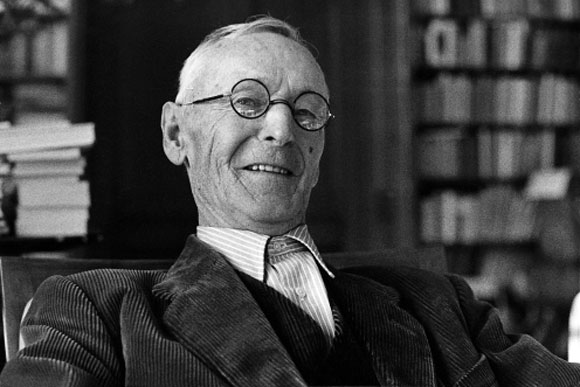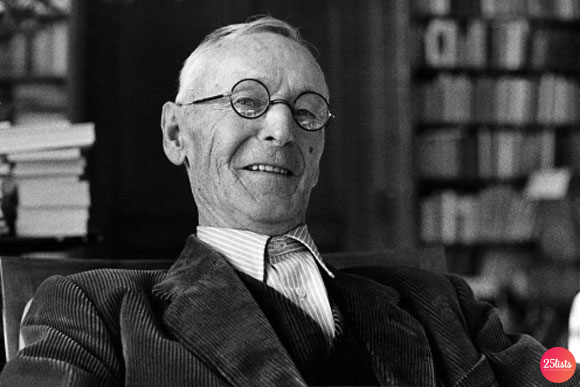Passionate about existentialist philosophy and oriental philosophy, in particular Hinduism and Buddhism, he talks about his thoughts and travel experiences through writing. Let’s discover the story of Hermann Hesse, the great mind of the twentieth century.
Who was Hermann Hesse
Hermann Hesse (Calw, 2 July 1877 – Montagnola, 9 August 1962) was a German writer. It grows in a Swabian town with a family of well-known missionaries of which we remember the grandfather Hermann Gundert sent to India and the father Johannes who went to the same place. Once back he opens one of the most famous pietist publishing houses of the time. With these premises it is easy to understand that the little one is educated following the religious teachings which he often perceives as overwhelming.
Despite this he prepares to enter one of the most important Protestant schools in the region, managing to be admitted to the theological studies.
The rigidity of the doctrine, however, led him to completely deny it and to live a period of great difficulty which was resolved only after being hospitalized in various clinics. In this period he is passionate about reading and dedicates himself to realization of some poems and short stories officially deciding to devote himself to a career as a writer.
The beginning of Hermann Hesse’s career
Here he begins to train as a writer, also meeting young colleagues and stimulating environments that lead him to support the creed of the great Novalis. He then moves to Basel where he becomes assistant in a bookstore continuing to write and publish works such as “Posthumous writings” and “Hermann Lauscher’s poems”. During this period he also begins to travel to Italy and get closer to the Franciscan places where he draws inspiration for the essay “Franz von Assisi”.
He begins to win several literary prizes and to get closer and closer to spiritual environments also thanks to his travels in Asia. The journey started for the search for peace it then ends with economic difficulties and physical problems that force him to return to Germany. He begins to have a serious crisis of artistic identity with the outbreak of the First World War which, once concluded, leads him to seek the help of the psychoanalyst Carl Gustav Jung.

The success of Hermann Hesse
Influenced by the thoughts of Nietzsche and Shopenhauer, he approaches the world of philosophy and specifically the existentialist one. In 1922 he wrote what is probably one of his most important works: Siddhartha. This is followed by “Narciso Boccadoro” and the long decennial work on “The game of glass beads”.
Meantime he also approaches the world of painting also becoming quite respected in the industry. He argues that the role of the artist should be limited to that, without being influenced by the world of politics that moves away from what should be a devotion. These theories are written in his latest text which allows him to get the Nobel Prize for Literature in 1946.
READ ALSO: Who was Michel Foucault: life of the philosopher

